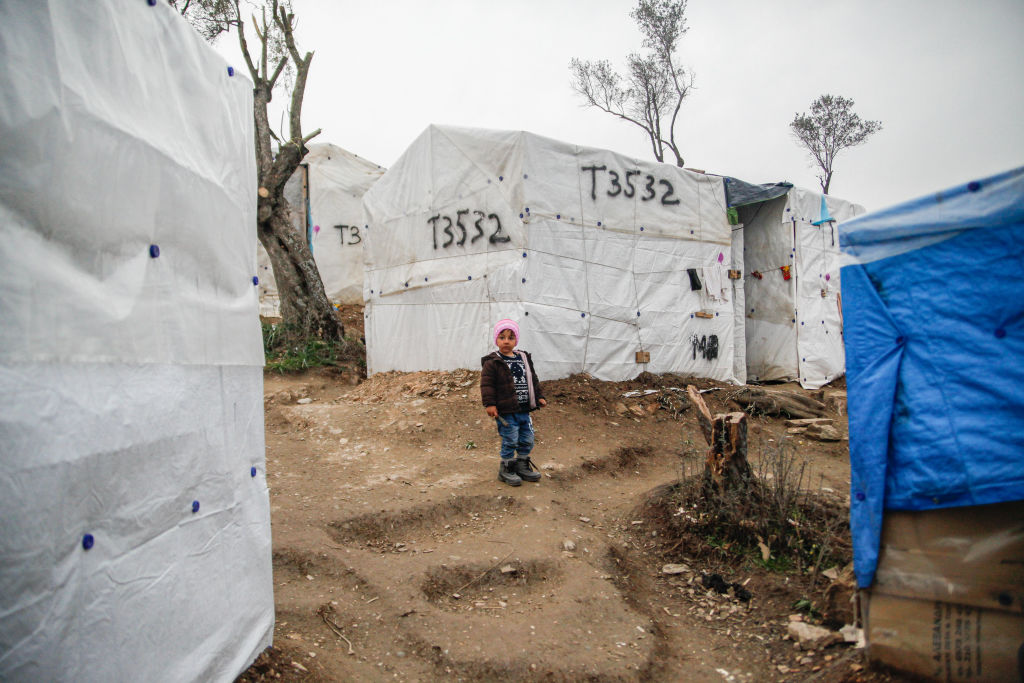
It’s easy to focus inwards during times like this. Families take care of loved ones and governments take care of their people. But another crisis created by the novel coronavirus is looming. Over the coming months, governments hosting the world’s 70 million refugees will have to make a difficult choice between diverting critical resources to support foreigners or taking the easier route of opening borders to allow millions to move into neighbouring countries.
The average quarter-acre block in Australia is just over 1,000 square metres, making self-isolation a relatively luxurious proposition. Even for someone who’s contained to an apartment, two weeks can pass quickly. In a facility built to international standards, a refugee can expect 3.5 square metres of roof over their head. For a family of four, that’s a small Australian bedroom to live in, day in, day out. Camps are built with a minimum of 45 square metres per person, including roads, schools and other shared infrastructure. These are cramped quarters that facilitate the quick spread of a virus.
The refugees housed in these camps will undoubtedly be watching with fear the growing threat from Covid-19 wondering when it will strike them. Host governments will also be watching, with increasing awareness of the difficult decisions they will have to make.
Turkey hosts more than 3 million refugees; Lebanon, 1.5 million; and Bangladesh, 1 million. As the virus spreads, what appetite will their people have for limited resources to be diverted to help tens or hundreds of thousands of foreigners? And what will the refugees do if they are not given adequate medical support?
Governments hosting large populations of refugees in camps have three options.
The first is to focus medical services on their own people, mobilising health workers and drawing on strategic stockpiles to do what they can to protect their citizens. The refugees in this scenario will be left in the already overstretched hands of the international community.
If host governments were to pursue that option, violence would follow. It could start from within the camps as the young and healthy watch their parents die, angry that not enough was done to help them. It could come from outside the camps if the authorities were to show the slightest compassion and divert medical assistance away from their own nationals. Either way, it’s a situation most governments will want to avoid.
The second is to contain the camps by force. Just as the Chinese government shut down Hubei and the Italian government shut down Lombardy, any geographic area including a refugee camp can be closed off. The difference, though, is the built environment. Camps don’t have running water, piped gas or sewerage systems. Residents can’t stock up on food and wait it out. Because of their temporary nature, camps are reliant upon continuing interaction with the outside world. Close that and you condemn people to an array of other risks arising from overflowing latrines, unfiltered water and a lack of security. This option may show political strength, but it will compound the humanitarian disaster.
The last option, the most audacious yet also the easiest, is to facilitate a mass migration of people out of a host government’s territory. Don’t think that that’s beyond the realm of possibility.
Turkish President Recep Tayyip Erdogan, whose country hosts one of the world’s largest refugee populations, has a history of leveraging them to his advantage. In 2016 he threatened to help refugees cross the border in an effort to strengthen his hand in negotiations over Turkey’s entry into Europe. In 2017 he threatened to scrap the refugee deal with Europe after Turkish politicians were barred from holding political rallies in some European countries. Last year he said Turkey would ‘open its gates’ if a safe zone between Syria and Turkey wasn’t created, and this month he stated that Turkey’s doors were open in an effort to leverage more help for Syrian refugees in Turkey.
Imagine the European migration crisis that changed the politics of a continent happening again, but then add the ramifications of a few million people carrying a fast-spreading virus. What will Europe do this time around? What about other countries neighbouring large refugee populations?
From a humanitarian perspective, none of these three options is preferable. But for pragmatic decision-makers in Western donor capitals, the first is the best of the three as it contains the risks.
To convince governments hosting refugees to choose this path, wealthy countries will need to do more than express empathy or organise donor conferences—they will need to provide financial support now. This isn’t a call for increased foreign assistance. It’s a pragmatic call for self-interest.
In an interconnected world threatened by a rapidly spreading virus, helping other countries carry the burden reduces the risks to everyone else.

